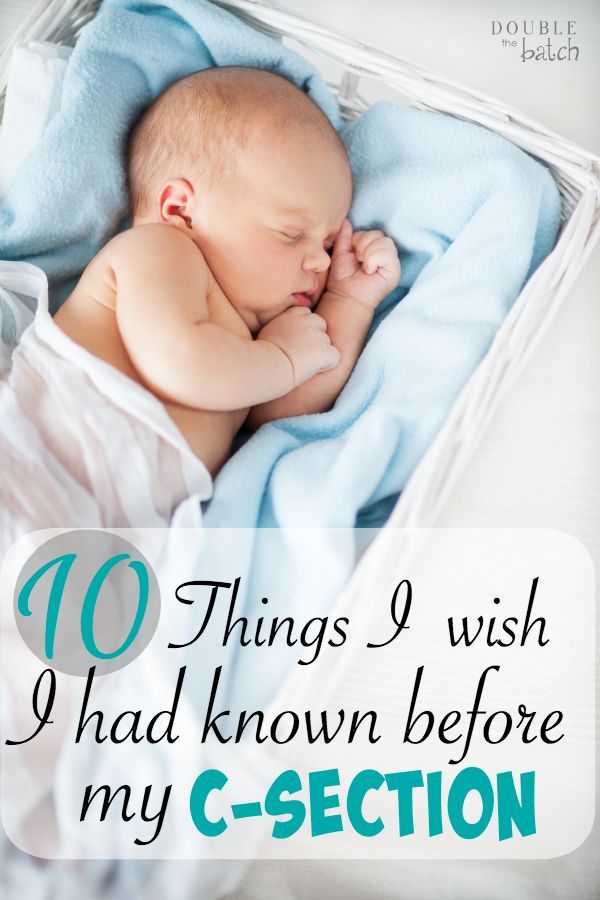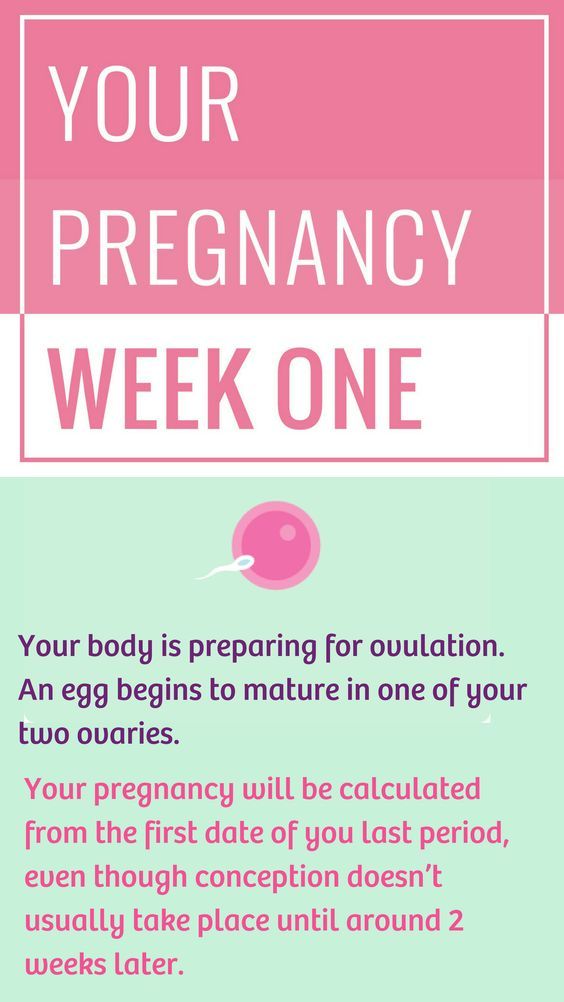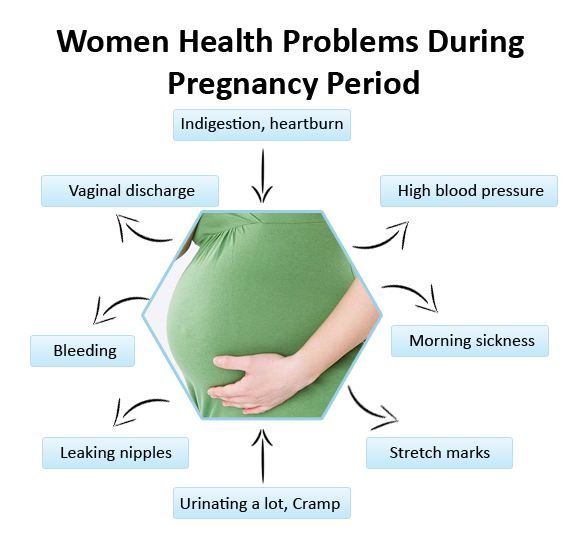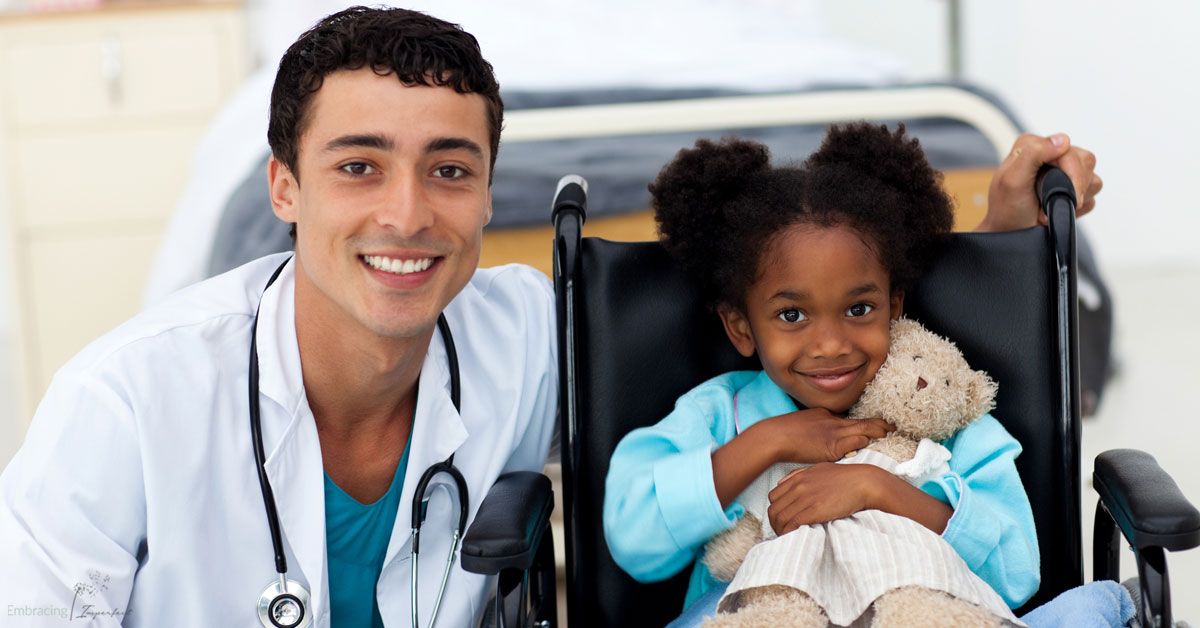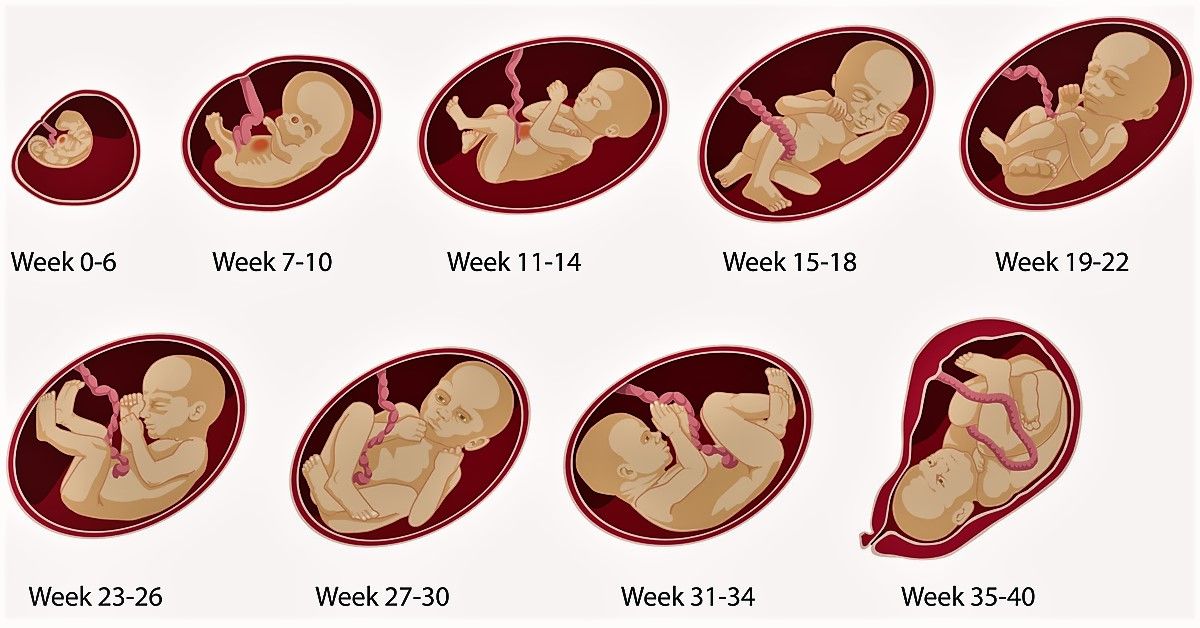What is a baby breech
What happens if your baby is breech?
Babies often twist and turn during pregnancy, but most will have moved into the head-down (also known as head-first) position by the time labour begins. However, that does not always happen, and a baby may be:
- bottom first or feet first (breech position)
- lying sideways (transverse position)
Bottom first or feet first (breech baby)
If your baby is lying bottom or feet first, they are in the breech position. If they're still breech at around 36 weeks' gestation, the obstetrician and midwife will discuss your options for a safe delivery.
Turning a breech baby
If your baby is in a breech position at 36 weeks, you'll usually be offered an external cephalic version (ECV). This is when a healthcare professional, such as an obstetrician, tries to turn the baby into a head-down position by applying pressure on your abdomen. It's a safe procedure, although it can be a bit uncomfortable. Around 50% of breech babies can be turned using ECV, allowing a vaginal birth.
Giving birth to a breech baby
If an ECV does not work, you'll need to discuss your options for a vaginal birth or caesarean section with your midwife and obstetrician.
If you plan a caesarean and then go into labour before the operation, your obstetrician will assess whether it's safe to proceed with the caesarean delivery. If the baby is close to being born, it may be safer for you to have a vaginal breech birth.
The Royal College of Obstetricians and Gynaecologists (RCOG) website has more information on what to expect if your baby is still breech at the end of pregnancy.
The RCOG advises against a vaginal breech delivery if:
- your baby's feet are below its bottom – known as a "footling breech"
- your baby is larger or smaller than average – your healthcare team will discuss this with you
- your baby is in a certain position – for example, their neck is very tilted back, which can make delivery of the head more difficult
- you have a low-lying placenta (placenta praevia)
- you have pre-eclampsia
Lying sideways (transverse baby)
If your baby is lying sideways across the womb, they are in the transverse position.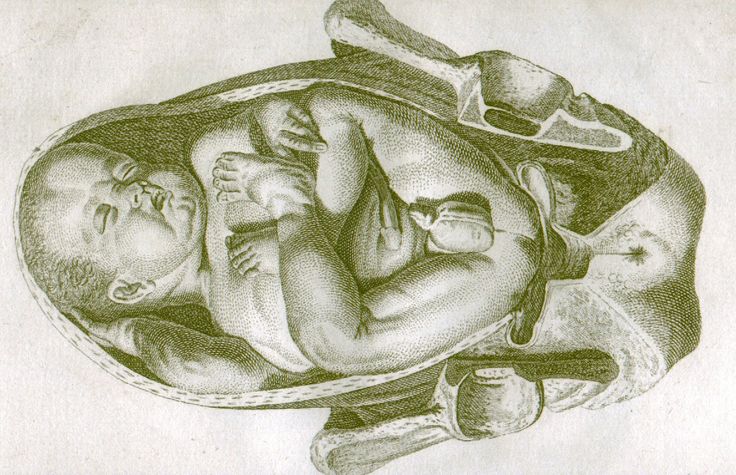 Although many babies lie sideways early on in pregnancy, most turn themselves into the head-down position by the final trimester.
Although many babies lie sideways early on in pregnancy, most turn themselves into the head-down position by the final trimester.
Giving birth to a transverse baby
Depending on how many weeks pregnant you are when your baby is in a transverse position, you may be admitted to hospital. This is because of the very small risk of the umbilical cord coming out of your womb before your baby is born (cord prolapse). If this happens, it's a medical emergency and the baby must be delivered very quickly.
Sometimes, it's possible to manually turn the baby to a head-down position, and you may be offered this.
But, if your baby is still in the transverse position when you approach your due date or by the time labour begins, you'll most likely be advised to have a caesarean section.
Video: My baby is breech. What help will I get?
In this video, a midwife describes what a breech position is and what can be done if your baby is breech.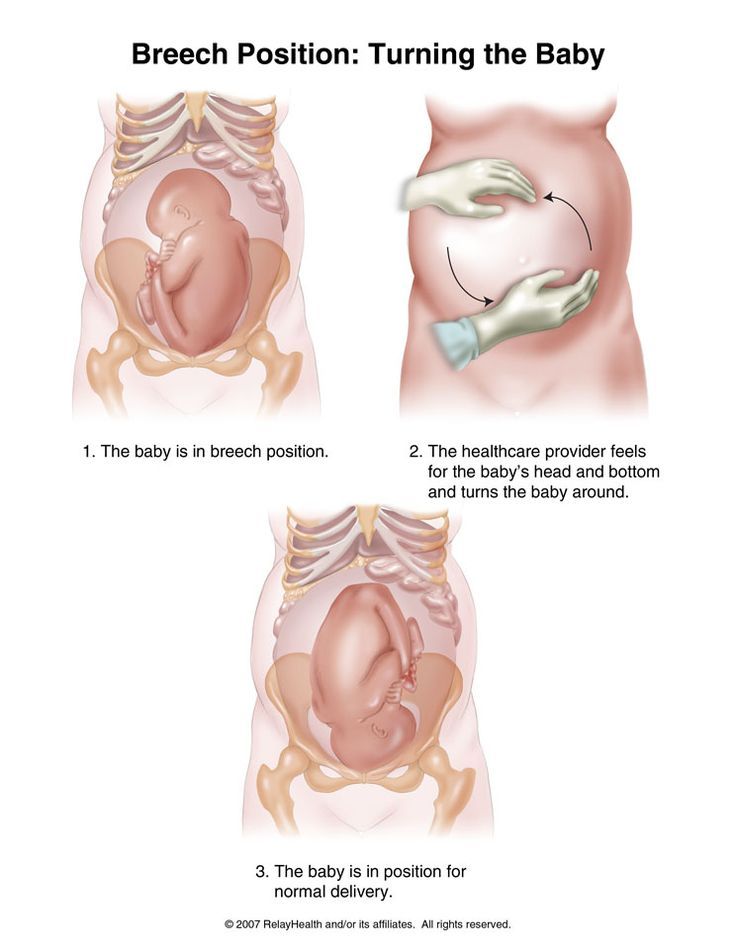
Media last reviewed: 3 February 2023
Media review due: 3 February 2026
Page last reviewed: 12 November 2020
Next review due: 12 November 2023
What Causes it and What to Expect
Are you wondering what it means to have a breech baby and what it means for your delivery?
From very early in the pregnancy, your tiny acrobat is twisting, turning, kicking, and tumbling about, suspended in the amniotic fluid in your uterus. As they grow, it gets harder to turn around—you’ll feel lots of somersaults and karate kicks!
By the time you’re at week 36, the position your baby is in begins to matter for delivery. Most babies will have turned so their heads are down toward the birth canal, but some have not—they are in the breech position. A breech baby presents with their buttocks and/or feet first instead of their head, which is a higher risk position for vaginal birth.
But just because your baby is in a breech position doesn’t mean they will stay that way. The closer the baby gets to full term, however, the harder it is to turn around on their own.
The Importance of Fetal Position Before Delivery
The position of the baby’s head matters for delivery. During birth, the baby’s head pushes through the vaginal canal, widening it and making it possible for the rest of the body to follow more easily. If the baby’s buttocks or feet lead the way, labor can become more difficult and dangerous.
Dangers of a vaginal breech birth include cord prolapse (a rare emergency when the umbilical cord exits the cervical opening first), traumatic injury such as a dislocated shoulder, or reduced oxygen if the head cannot pass through the canal after the rest of the body quickly enough. To avoid these risks, your OBGYN may recommend turning the baby to the head down position with an external, manual manipulation called external cephalic version (ECV).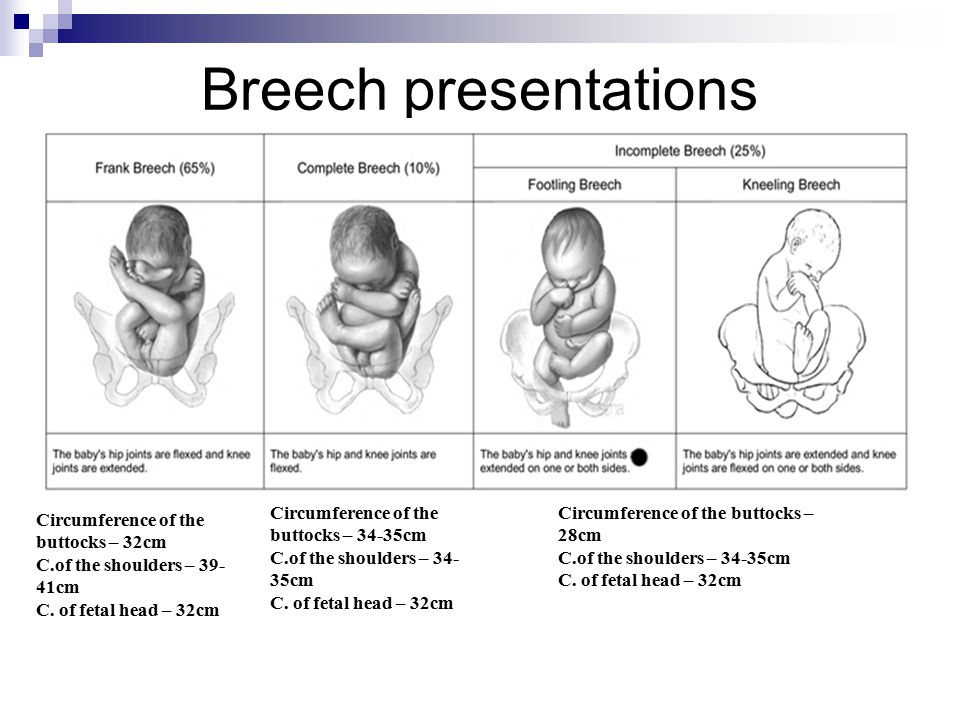 If that doesn’t work or your baby remains in the breech position at week 39 gestation, your OBGYN will recommend a C-section as the safest birth option.
If that doesn’t work or your baby remains in the breech position at week 39 gestation, your OBGYN will recommend a C-section as the safest birth option.
Breech Positions
Your baby’s position will be assessed at your 36 week visit with a small ultrasound. By this time, most babies will be positioned with their head down toward the birth canal. However, about 3-4% of them will not.
There are three types of breech baby positions:
- Frank Breech Position
The baby is in a pike position, with both feet up near the baby’s head.
- Incomplete Breech Position
One leg is up by the baby’s head.
- Complete Breech Position
Both knees are bent and the baby’s feet and bottom are closest to the birth canal.
Causes of Breech Baby
Most of the time, the position of the baby is a chance occurrence with no clear cause.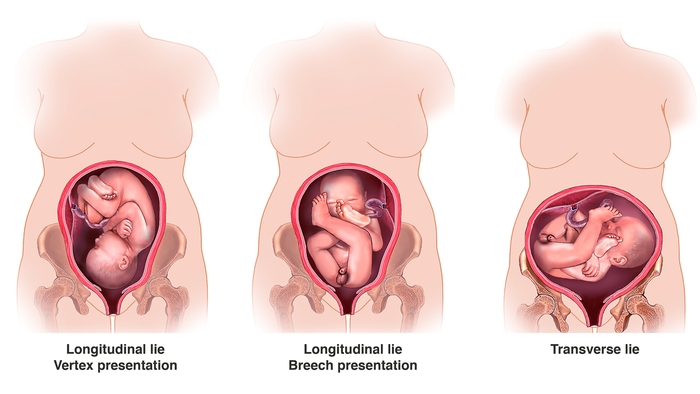 In about 15% of breech cases, a uterine abnormality is the cause. Other reported risk factors include:
In about 15% of breech cases, a uterine abnormality is the cause. Other reported risk factors include:
- A previous sibling or either parent who was in breech presentation
- Uterine abnormality (bicornuate or septate uterus, fibroid)
- Placental location (placenta previa, cornual placenta)
- Extremes of amniotic fluid volume (polyhydramnios, oligohydramnios)
- Fetal anomaly (anencephaly, hydrocephaly, sacrococcygeal teratoma, neck mass)
- Crowding from multiple gestation
- Fetal neurologic impairment
- Maternal hypothyroidism
- Female sex
- Older maternal age
How to Fix Breech Position Naturally
In many situations, babies move out of the breech position on their own.
Some natural solutions women use to encourage a breech baby to turn over before the 39th week include:
- Moxibustion
- Acupuncture
- Chiropractic care
While these methods do not have sufficient evidence to prove they are effective, they are not harmful if performed by a licensed professional.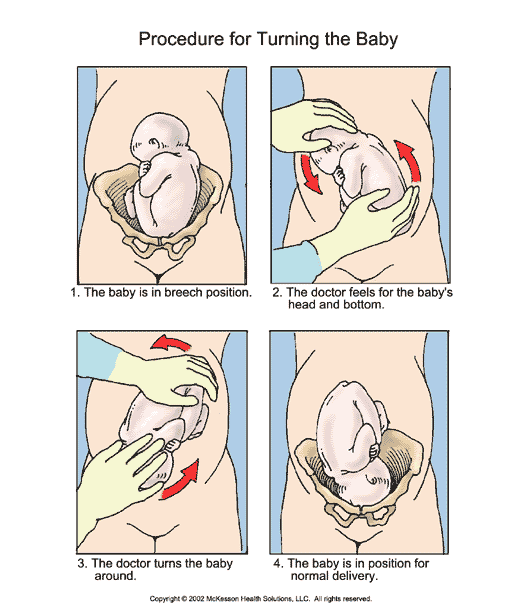
Yoga and swimming are other activities that could encourage the baby to turn around by creating a sense of more space as your posture changes.
OBGYNs can perform an external cephalic version (ECV) if a baby has not shifted positions after 37 weeks gestation. To perform this procedure, the OBGYN will place their hands on the mother’s stomach and apply pressure to physically turn the baby. This can be painful and does carry some risk, which is why it is performed in the hospital. In many circumstances, a spinal anesthetic (epidural) can be offered.
Chances of C-Section with Breech Baby
If a baby is still presenting as breech by week 39 and interventions have not encouraged the baby to turn around, a C-Section will be recommended nearly 100% of the time.
In the case of twins, if the first baby is born head first and the second is in breech position, the second baby can be born breech with a vaginal delivery under certain circumstances.
Breech Births and Birth Defects
In most cases, babies who are born breech do not experience lasting harm. The most common problem associated with breech babies is hip dysplasia due to their reduced movement and position in the uterus.
The most common problem associated with breech babies is hip dysplasia due to their reduced movement and position in the uterus.
Conclusion
All the reasons babies can end up topsy-turvy by the final weeks of pregnancy aren’t fully understood. But with regular check-ins, you and your OBGYN can be prepared for a safer, smoother delivery.
Dr. Sarah Yanke has been providing healthcare to women in Madison since 2010, specializing in high and low-risk obstetrics, contraception, management of abnormal uterine bleeding, and minimally invasive surgical techniques. She is a Board Certified Fellow of the American College of Obstetrics and Gynecology.
China Colorful Rainbow Baby Barrel Stuffed Toy, High Quality Colorful Rainbow Baby Barrel Stuffed Toy at Bossgoo.com
Sensory Development : Playing sec AFE material Colorful Kids Soft Play helps Toddlers develop dexterity, subtle and rough motor skills, spatial thinking, creativity and other sensory skills.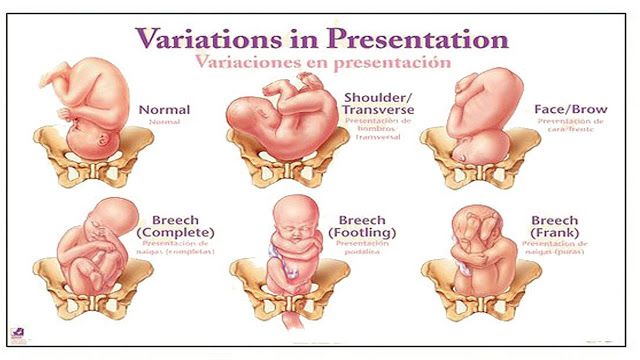
C aptivating and Colorful design: Our baby soft toys feature visually appealing colors that stimulate little minds and promote early color recognition. Choose from vibrant primary or contemporary colors. .
Sturdy : Our safety baby stuffed animals are made from safe material and are strong enough to support your baby's weight, yet soft enough to prevent injury. The zipper of the Kids Rainbow Barrel is also closed for maximum safety and comfort.
| product name | Colorful Kids Soft Rainbow Barrel Toy |
| keyword | kids soft play |
| material | PVC+SPONGE |
| Usage | exercise, fitness |
| Features | 1. durable, anti-tear 2. non-toxic 3. waterproof, easy to clean |
| size | 60*80cm |
| MOQ | 50pcs |
| payment | T/T, L/C, D/P |
| Packing | 1pc/plastic film+woven bag |
| sample | Free samples are available, but the buyers need to pay for the express |
1.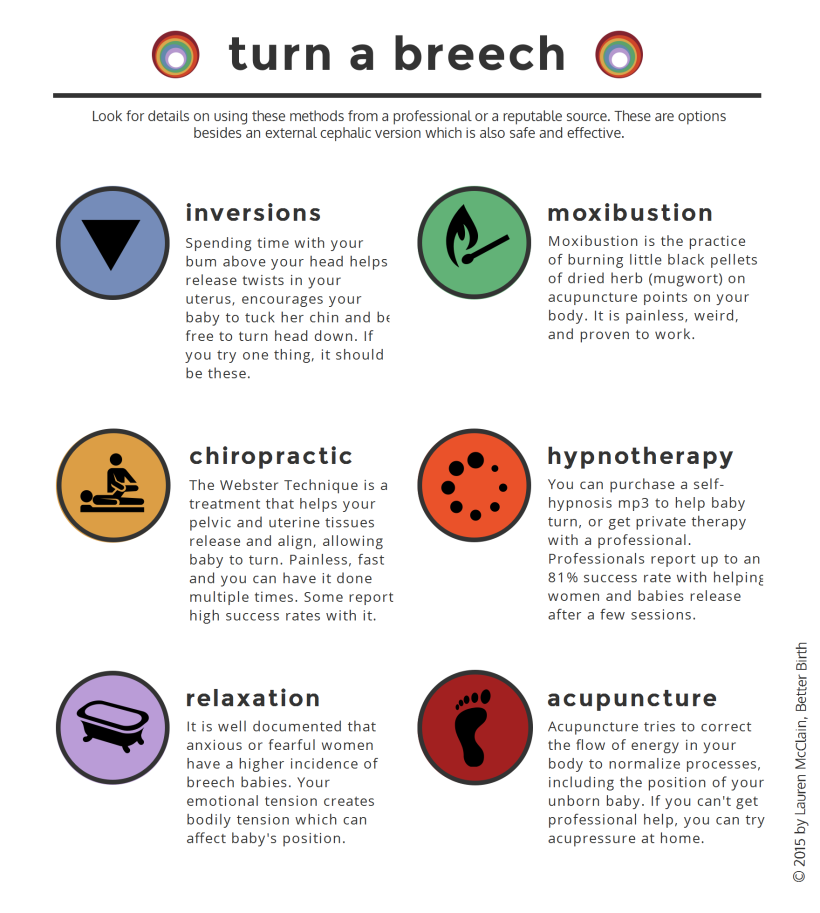 Q: Are you a factory or trading company?
Q: Are you a factory or trading company?
A: We are a factory and we have a professional team of workers, designers and inspectors.
2.Q: How many workers in the factory?
A: We have 70 workers in total.
3.Q: What are your main products?
A: Gymnastic mat, foldable gym mat, foldable exercise mat, acrobatic mat, gym mat, sports mat and baby soft play equipment.
4. Q: How to get a sample?
A: It usually takes 3-5 days.
5.Q: What's your advantage?
A: (1) competitive price
(2) high quality;
(3) general purchase;
(4) fast response and professional offer for all inquiries;
(5) 1 year quality guarantee on all our products.
6.Q: What is your minimum quantity?
A: for general products, 50 pcs. / Color for one style. If you cannot reach the minimum quantity, please contact our sales team and we will quote you a direct order price.
7.Q: How long to deliver the goods?
A: Exact delivery date must match your style and quantity.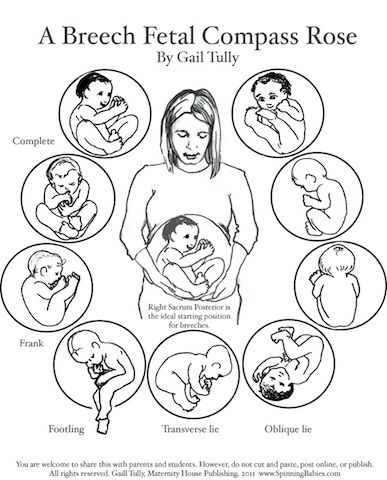 Usually within 20 working days after receiving 30% down payment.
Usually within 20 working days after receiving 30% down payment.
8.Q: How can I contact you?
A: Please contact us by Trademanager, Email, Whatsapp and Phone, also warmly welcome you to visit our company at your convenience.
Cedar barrel for children
Main page
Information
Articles
Cedar barrels
Cedar barrel for children
Every parent wants their child to be the healthiest, strongest and smartest. Modern society, through the media, influences young families so that they buy all sorts of expensive vitamins, immunostimulants to maintain a fragile child's body. But over time, every parent understands that there is no desire and strength to pour chemistry into their child endlessly, that all these methods are often just a marketing ploy to promote the popularity of medicines. Therefore, many begin to look for a more "healthy" alternative for themselves and their children.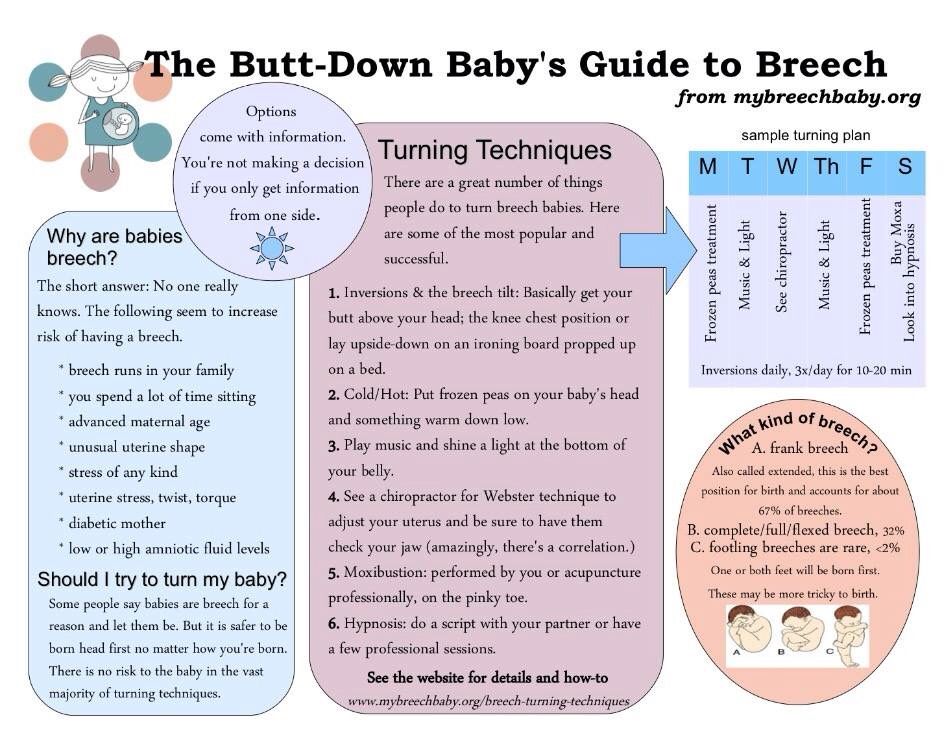
Such an alternative, of course, in the first place is sports. Any physical activity has a beneficial effect on children's immunity, strengthening it. But, when every day a child comes into contact with more than thirty of the same guys, it is inevitable to become infected with the virus. And here even strong athletes cannot resist during the period of colds and infections.
One of the proven "healthy" methods of maintaining a child's body, according to the clients of the company "Gifts of Kedra", was a cedar phyto barrel. Its useful properties have been appreciated by our customers both for themselves and for their children.
Why do children like a phyto barrel more than a classic sauna?
The fact is that many children do not like the bathhouse because it is difficult to breathe there, it is hot, boring, etc., the head is outside in the phytobarrel, and even a three-four-year-old child in this case can be captivated by turning on a cartoon, an audio fairy tale on a tablet or on TV.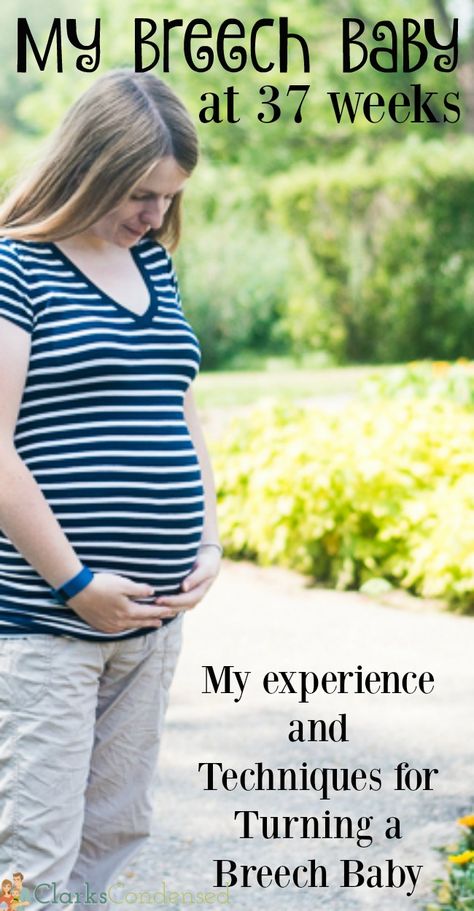
How do barrel procedures affect a child's body? The steamed skin of a child releases all unnecessary substances and at the same time absorbs vapors of wood rich in phytoncides and phyto-collections (if they are used in a steam generator for a phyto-barrel). Any vaping procedure is based not only on warming up the body, but also on subsequent cooling, which means that natural hardening occurs. At an older age, your baby will be less susceptible to temperature changes, which means the body becomes more stable and strong. During the epidemiological period, several procedures in a barrel facilitate the course of the disease at times or completely block the spread of the virus. In addition, soaring in a barrel calms the nervous system, has a beneficial effect on sleep, and also on the digestive system due to increased blood flow.
How should children be treated in a barrel?
The child's body is a very delicate structure, so the baby should be exposed to steam with extreme caution, starting from three to five minutes, gradually raising the temperature to a comfortable one.